Chapter 1
![BCM E2 PM [Introduction BCM Planning Methodology] Banner](https://blog.bcm-institute.org/hs-fs/hubfs/BCM%20E2%20Blog%20Banner/BCM%20E2%20PM%20%5BIntroduction%20BCM%20Planning%20Methodology%5D%20Banner.png?width=1920&height=384&name=BCM%20E2%20PM%20%5BIntroduction%20BCM%20Planning%20Methodology%5D%20Banner.png)
Business Continuity Management Planning Methodology for Bandtree
The successful implementation of Business Continuity Management (BCM) at Bandtree Sdn Bhd is pivotal to ensuring that the organisation can maintain its core functions during disruptions.
As a government-linked company specialising in corporate property management, Bandtree must safeguard the real estate and infrastructure services that are critical to Brunei Darussalam's development.
This chapter outlines the seven-phase BCM planning methodology that aligns with the ISO 22301 standard.
Purpose of Chapter
 This chapter aims to provide a comprehensive overview of the Business Continuity Management (BCM) planning methodology tailored to Bandtree Sdn Bhd, a government-linked company in Brunei Darussalam.
This chapter aims to provide a comprehensive overview of the Business Continuity Management (BCM) planning methodology tailored to Bandtree Sdn Bhd, a government-linked company in Brunei Darussalam.
The purpose of this section is to guide Bandtree in the systematic development and implementation of a BCM program that aligns with ISO 22301 standards.
By following the seven-phase methodology outlined herein, Bandtree will be equipped to identify, assess, and manage risks effectively, ensuring that its critical business functions and services are maintained during times of disruption.
The chapter serves as a roadmap for Bandtree to establish a robust BCM framework, which includes risk analysis, business impact assessments, continuity strategies, plan development, and regular testing.
It also emphasises the importance of continuous program management to ensure long-term resilience.
1. Project Management (PM)
The first phase in the BCM planning methodology involves establishing a robust Project Management framework to oversee the planning process.
This includes defining roles and responsibilities, ensuring executive sponsorship, and allocating necessary resources. Given Bandtree’s operations within Brunei’s real estate sector, the project manager should have a clear understanding of the infrastructure and regulatory environment.
Specific Requirement for Bandtree:
Ensure that the project management team includes stakeholders from the government and local authorities, as their support is crucial for continuity planning in a government-linked company.
2. Risk Analysis and Review (RAR)
The Risk Analysis and Review phase focuses on identifying, assessing, and evaluating risks that could affect Bandtree's ability to deliver services. This includes both internal and external threats, such as natural disasters, cyber threats, and economic instability. The organisation must also assess risks specific to the property management sector, such as regulatory changes or environmental hazards.
Specific Requirement for Bandtree:
Incorporate a review of Brunei’s unique regulatory environment and government policies that could impact risk mitigation strategies for property management.
3. Business Impact Analysis (BIA)
The BIA phase identifies the critical business functions and processes essential to Bandtree’s operations. These may include managing real estate portfolios, ensuring the safety and security of assets, and delivering services to clients.
The analysis evaluates the potential impacts of disruptions on these critical functions, helping Bandtree prioritise recovery efforts.
Specific Requirement for Bandtree:
Include a focus on high-value infrastructure projects and critical real estate holdings in the BIA to ensure that the continuity of services related to national infrastructure is prioritised.
4. Business Continuity Strategy (BCS)
Based on the findings of the BIA and RAR, Bandtree will develop a Business Continuity Strategy that outlines specific approaches to mitigate risks and maintain operations during disruptions.
This strategy should cover areas such as resource allocation, emergency response plans, and recovery tactics.
Specific Requirement for Bandtree:
Develop continuity strategies tailored to Brunei’s geographical location and infrastructure resilience, taking into account the potential for natural hazards such as flooding or earthquakes.
5. Plan Development (PD)
Once the strategy is in place, Bandtree will develop detailed Business Continuity Plans (BC Plans) that address specific scenarios identified during the risk analysis and BIA phases.
These plans should be clear, comprehensive, and executable, detailing the roles, responsibilities, and actions required during a crisis.
Specific Requirement for Bandtree:
Ensure that BC Plans incorporate local emergency response protocols and are aligned with the national disaster management framework, as Bandtree operates in a government-linked context.
6. Testing and Exercising (TE)
To ensure the effectiveness of the developed plans, Bandtree must regularly test and exercise its Business Continuity Plans.
This phase involves simulation exercises, tabletop drills, and full-scale tests to assess the team's readiness and the viability of the plans under realistic conditions.
Specific Requirement for Bandtree:
Conduct joint exercises with other government-linked agencies to foster collaboration and ensure that Bandtree’s response efforts are aligned with national recovery plans.
7. Program Management (PgM)
The final phase of the BCM methodology focuses on the ongoing management of the continuity program.
This includes reviewing and updating the plans, ensuring continuous improvement, and adapting the program to changing risks and organisational needs.
This phase ensures that Bandtree’s BCM program remains aligned with ISO 22301 requirements and national resilience strategies.
Specific Requirement for Bandtree:
Establish a dedicated BCM team that liaises with government authorities to ensure that the program evolves with the national resilience objectives and regulatory updates in Brunei.
By implementing this BCM planning methodology, Bandtree will not only meet ISO 22301 requirements but will also enhance its capacity to sustain critical operations, contribute to national resilience, and protect the value of the nation's infrastructure.
Summing Up ...
Implementing this BCM program will offer numerous benefits to Bandtree, including:
- Enhanced Organisational Resilience: By following the structured methodology, Bandtree will develop the capability to continue delivering critical services despite disruptions, safeguarding its reputation as a reliable property management company.
- Regulatory Compliance: The methodology aligns with ISO 22301, helping Bandtree meet international standards while ensuring that its business continuity plans comply with local government regulations and national disaster management protocols.
- Risk Mitigation: Bandtree will be better equipped to identify and mitigate potential risks—whether from environmental, economic, or technological sources—ensuring that its operations are protected from unforeseen disruptions.
- Collaboration with Government: As a government-linked entity, Bandtree's BCM program will be integrated with national resilience efforts, facilitating collaboration with other government bodies and ensuring a coordinated response during crises.
- Continuous Improvement: The methodology’s focus on program management ensures that Bandtree’s BCM efforts are dynamic, adaptable, and aligned with emerging risks and organisational changes, thus fostering a culture of continuous improvement in resilience practices.
By adopting this BCM planning methodology, Bandtree can confidently build a resilient infrastructure, maintain business operations during crises, and contribute to the broader national goal of creating a robust and sustainable environment for both public and private sectors.
Implementing Business Continuity Management for Bandtree: A Practical Guide |
||||
| eBook 2: Implementing Business Continuity Management |
||||
| C1 | C2 | C3 | C4 | C5 |
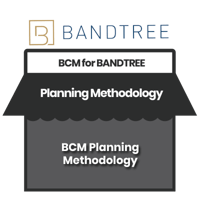 |
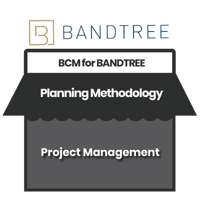 |
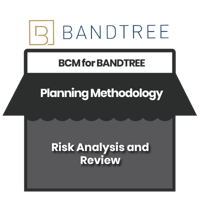 |
 |
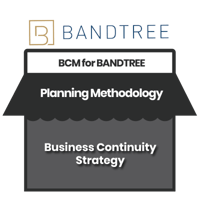 |
| C6 | C7 | C8 | C9 | C10 |
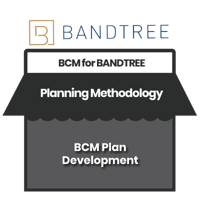 |
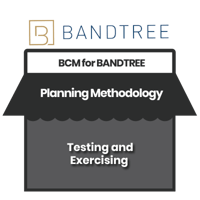 |
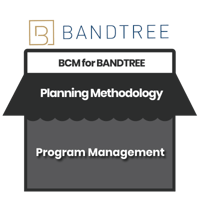 |
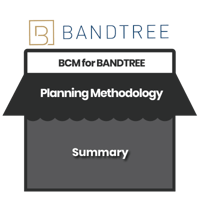 |
 |





![Register [BL-B-3]*](https://no-cache.hubspot.com/cta/default/3893111/ac6cf073-4cdd-4541-91ed-889f731d5076.png)



![FAQ [BL-B-3]](https://no-cache.hubspot.com/cta/default/3893111/b3824ba1-7aa1-4eb6-bef8-94f57121c5ae.png)
![Email to Sales Team [BCM Institute]](https://no-cache.hubspot.com/cta/default/3893111/3c53daeb-2836-4843-b0e0-645baee2ab9e.png)





